This is the first post in a seven post series on wool rug braiding. Other posts include Planning Your Braided Wool Rug, Disassembly & Felting, Stripping, Stitching, & Spooling, Starting Your Braided Wool Rug, Lacing Your Braided Wool Rug, and Finishing & Care.
You’ve decided to take up wool rug braiding? Hooray! I’m so excited for you! Wool rug braiding is a super fun wintertime hobby and a great way to upcycle old wool clothes and blankets. They’re a timeless treasure that can really warm up a home. They also make great gifts for the favoritest of your favorite friends and relatives.
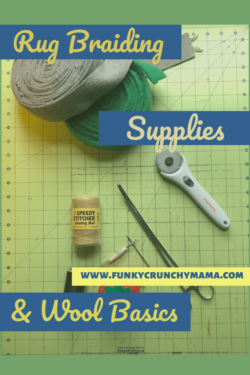
This post contains affiliate links.
Wool rug braiding is also a very budget friendly hobby. The most expensive component is wool, and how much you spend on that is entirely up to you. The rest of the supplies are pretty limited and you may already have them around your home.
So what all do you need to make one of these beautiful pieces?
Wool (more below!)
Needle and thread
Tapestry needle
Waxed polyester thread
Hemostat
Stitch ripper
Rotary cutter & mat
Also, while making one of these DOES NOT take amazing sewing skills, you will need access to a sewing machine. I frequently see machines for cheap or free online or at second hand stores, and a lot of people (at least the ones I know) seem to have one (or several) hiding in their basement collecting dust. (I might actually be one of those people.) If you don’t have one, just ask around. I’m sure one will magically appear into your life.
What kind of wool is needed for braided wool rugs?
There are many different kinds of wool, varying sources and construction. The kind that you’ll want for braiding is woven wool. Woven wool is what is usually used for making winter coats, suit coats, pants, and blankets. Woven wool doesn’t have the elasticity of knits, so is better for making a tight braid.
You’ll want an 80/20 blend or better, 100% is best
80% wool, 20% other, preferably nylon. If you ever go carpet shopping, many of the higher quality, more durable choices are made of nylon — at least that’s how it was before new carpet technology. The same principle applies to creating your rug.
If you find a piece that isn’t labeled but you suspect is wool, you can generally trust that they’re all wool if a) it’s an older piece and the label simply states “dry clean only” or b) it has the feel of wool. How do you know if something feels like wool? Try this: If you’re ever shopping, find a wool piece and then find an imposter made of synthetics. Rub each of them between your fingers. The non-wool one will have a clear plastic feel, sometimes you can almost feel it scrape or squeak as two pieces rub together.
The thicker the better
When making a rug, the thicker the material, the better; it’s just easiest to work with and you’ll get the most bang for your buck. Winter coats and heavy blankets are best, if available. A lightweight wool is difficult to work with. Part of the braiding process is creating a roll (discussed later in the series). If the fabric is lightweight you either need to use a lot of it to make a good size roll, or you need to stuff it. One wastes fabric, the other is very tedious.
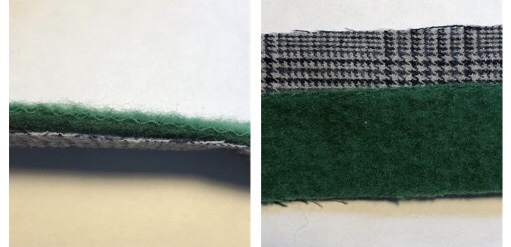
That said, if you find a fantastic pattern or color and it’s all wool, don’t hesitate to buy it. You can absolutely work with it, but do NOT buy a run-of-the-mill color in a lightly woven fabric. If it’s free, stick it in your stash for a rainy day, but as a general rule, stick with a heartier weave.
Colors and patterns
Buying wool, like decorating your home, is a very personal choice. But here are a few things I’ve learned in my braiding ventures:
- Neutrals: Buy lots of the ones you love, especially the lighter colors. I’m partial to greys, but a light grey winter coat is a rare find. Medium greys and dark greys are abundant. The general rule for braiding is to put light colors in the middle and darken as you work out. (If you start with dark colors in the middle, you risk it looking like a bullseye.) Since starting is sometimes the most overwhelming part, it’s nice if you have enough of the colors you’ll be using available.
- Colors: As a color lover, this is really difficult for me to say, but when it comes to using bold, solid colors, try to restrain yourself. Simply put, some colors are very dominating (especially red) and, unless they’re used throughout the rug, they are best introduced through a pattern.
- Patterns: Patterns encompass so many styles, from a simple monochromatic stripe or chevron to bold, bright plaids and paisleys. I love to introduce bright colors through patterned wool, as from there, you can either build on it or it can simply create visual interest while blending in.
Sourcing
While buying wool straight from the fabric store is the most ideal scenario, it’s also crazy expensive. Personally, I love the challenge of the hunt for secondhand items and the beautiful pieces that can come out of being creative with what’s available to you.
The first place I’d recommend looking is simply your own closet, followed by your family and friends’ closets. When I first starting braiding, I asked friends and family, but I also sent an email out to my co-workers. Not only did someone give me an old wool blanket, but one of my co-workers had a grandmother who used to braid and she gave me a box of wool already prepped! I couldn’t believe my luck!
My second favorite place is garage sales. While you won’t regularly find much for wool at your average garage sale, on occasion, you’ll come across a large, long coat or a blanket for cheap. It also never hurts to ask sellers if they have any wool coats they’re looking to part with. Keep in mind that it doesn’t matter if it’s stained or ripped and this may work to your advantage in getting a better price. My favorite are church sales. In Wisconsin, there are a slew of old ladies parting with wool in the name of God. All I have to say is “bless them!”
Third, hit up second hand stores. While a lot of second hand stores are onto the wool trend (and over-price accordingly), they typically have a reliable supply during the appropriate season and there are frequently 50% off sales. Unless I’m looking for something very specific and my need is immediate, I rarely pay full price at a secondhand store.
Again, wool comes in all shapes and sizes. When looking, don’t just look for winter coats. Hit up the suit coats, pants, skirts, scarves, and blankets; and visit both the men’s and women’s departments. You truly never know what you’ll find.
How much will I need?
This, of course, is dependent on the size. My first rug was about 2’ x 3’ and I used (roughly) three suit coats, a skirt, a pair of pants, and a winter coat. There are charts that will tell you yardage, but with using secondhand items, it’s really dependent on size, thickness, and construction. (Sometimes you lose material to button holes and pockets.)
For your first rug, I’d recommend trying to use what’s available to you and buying only what you need to supplement. After you’ve decided you love it, then start hoarding — I mean, collecting. 😉
Recap
- Use woven wool, thick is best
- Look for neutrals, especially in lighter colors
- Look for bold colors integrated into patterns instead of as solids
- Always ask around to help build your stash!
To learn more, read For the Love of Wool and Planning Your Wool Rug.
When you’re done shopping, comment with your finds below! I’d love to hear about them! 🙂
— Funky Crunchy Mama





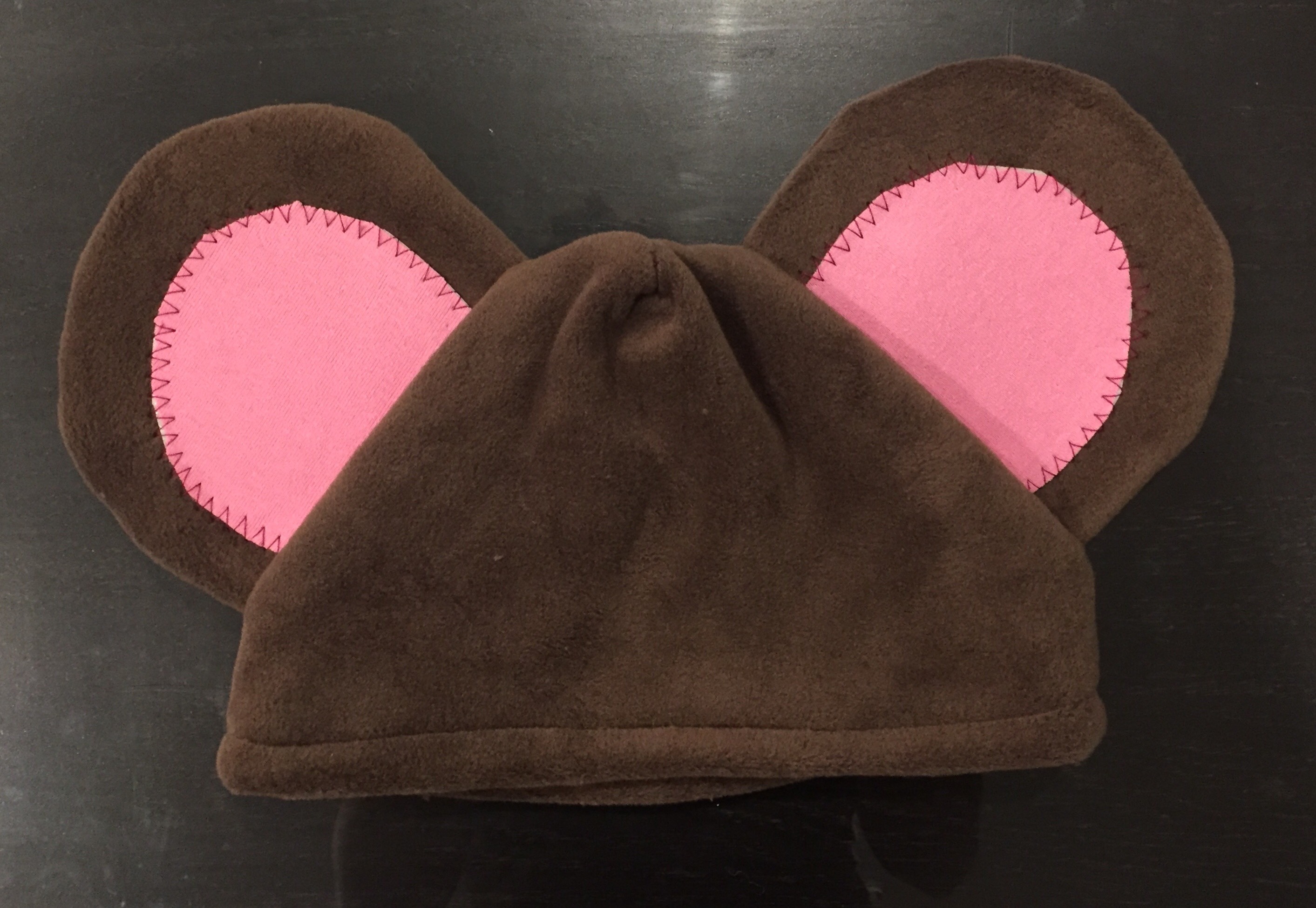
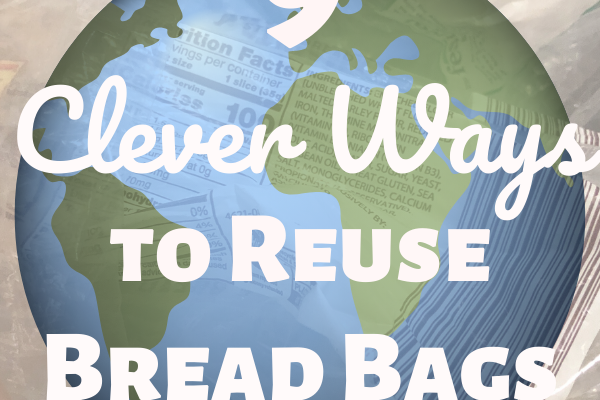
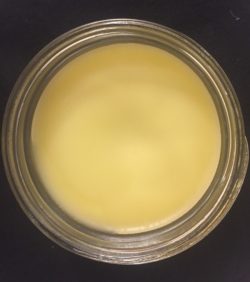
I’ve been looking for a new craft to try out and rug braiding sounds like it would be quite fun. I will have to see if I can find some wool next time I hit up the thrift stores and give this a try. Would love to add a homemade rug to our home.
Fantastic! I hope you’ll share your journey and creation!
I have some wool clothes that have been attacked by moths. If I had them dry cleaned would someone (maybe you) who braids rugs be interested in cutting them up to braid with?
Absolutely! But no dry cleaning necessary. 🙂 You need to felt them before braiding, so they end up in the washing machine anyway!
I’ve been wanting to get into braiding wool rugs for a while, and this was just the info I needed to get started! Thank you for all your tips! Looking forward to learning more!
I have been braiding rugs for quite some time; used to live by a Woolrich outlet, but they do not sell poundage anymore. Am looking for light greys, yellows, dark browns. I have alot of wool that I have collected over the years but need lighter colors. I have used blankets but do not tear up coats anymore due to the dust they create. I have lots of army blankets but they are olive green. Any suggestions where to find lighter colors.
Hi Sharon! Those light colors are so rare, I know! You may want to check Etsy. There are a few sellers that hand dye or you could dye your own, if that’s of interest. 🙂
HI SHARON, I HAVE LOTS OF WOOL. MY MOM USED TO BRAID AND NOW I HAVE IT ALL THE WOOL SHE NEVER GOT TO USE. I STARTED TO BRAID BUT NOW MY HANDS WON’T LET ME. I WAS ALSO A QUILTER SO YEARS OF QUILTING HAVE BOTHERED MY HANDS TO THE POINT THAT I CAN’T USE THEM FOR ANY SMALL THINGS ANYMORE. I HAVE GOLDS, ORANGES, GREENS, YELLOWS, AND OTHER COLORS TO CHOOSE FROM. ALL THE WOOL HAS BEEN KEPT IN CEDAR CHESTS.
I LIVE IN HURLEY, NY, OUTSIDE KINGSTON, NY AND ALSO HAVE A CABIN IN THE ADIRONDAKS.
.
I have a collection of wool, and quite a few pieces are Shetland wool. The other yardage is mostly tighter weaves, but varies. Do the looser Shetland pieces braid well ? I was going to start hooking but afraid they won’t be good for that. Thanks for any advice.
Hi Jan! If they’re a knit, they won’t braid well. If it’s a knit, you could look at felting it and using felted pieces as a base for needle felted art, making cozy coasters, or bags.
I hope that helps! I’d love to hear what you come up with!
Oh how cool! I would have never thought to do this! Thanks for all the info!